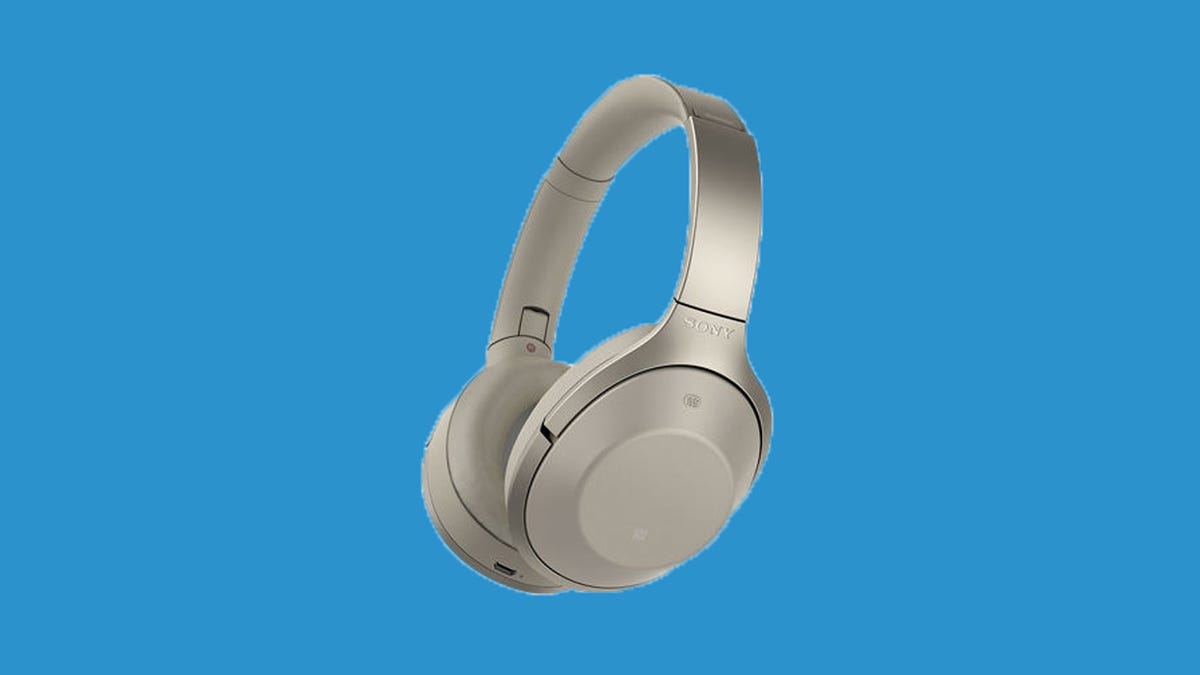Sony vs. Bose noise-canceling Bluetooth headphones: Which one sounds better?
The Audiophiliac swallows his distaste for Bluetooth and pits two $350 wireless headphones against one another.

Audiophiliac readers might have noticed I don't cover Bluetooth headphones, mostly because I feel the sound compromises, compared with similarly priced wired headphones, are too great. Sure, I've heard a few passable BT headphones, but the appeal of wireless audio is lost on me.
So while the wireless headphone market is booming I haven't been tempted to review a BT headphone, until I heard this one, the Sony MDR-1000X ($349, £330, AU$518). It might make a believer out of me. After all, Sony makes stellar audiophile headphones like the MDR-Z7 and MDR-Z1R. No Bluetooth headphone on the planet can touch those two for sound quality.
My CNET colleague David Carnoy recently reviewed the Sony and gave it an excellent rating of 8.4. But he gave its direct competitor, the Bose Quiet Comfort 35, an 8.8 and an Editors' Choice award. You can check out the reviews for his full impressions, but here's what he said when he compared the two: "While I'd personally give the slight nod to the Bose for sound, depending on the shape of your head and ears, and your listening tastes; you could prefer the Sony."
I was intrigued enough to listen for myself.
Ears-on testing
The MDR-1000X's battery charging time is four hours, playing time runs up to 20 hours. The headphone sports touch sensitive controls on the right ear cup for volume, pause, next/previous track all work well, and you can momentarily mute the music and disable the noise-canceling to hear the world around you. Nice! Build quality is good, but is there too much plastic for a $349 headphone? I think so, but I suppose that's a reasonable design compromise to keep weight down.
I enjoyed the MDR-1000X with Bluetooth for a few weeks before I got around to listening wired with the included cable, and guess what? The wired sound isn't better or worse, but the good news is when the MDR-1000X battery runs out of juice you can continue to listen with the wire. Still, I did the bulk of my listening with Bluetooth, because I assume most MDR-1000X owners will listen that way.
I liked the MDR-1000X at home, but they shined best when I took them down deep into the bowels of the NYC subway system. It's really noisy down there, especially when the No. 4 train rounds the curved tracks in the 14th street Union Square station. The train's shrieking steel wheels grinding against the tracks show no mercy to the huddled commuters, but lucky for me, the MDR-1000X hushed the racket to a surprisingly tolerable degree. In other, somewhat quieter subway stations the MDR-1000X tamed the sound of approaching trains so well I didn't hear them coming!
A Bose by any other comparison
I next compared a Bose Quiet Comfort 35 ($350, £290, AU$499) noise-canceler directly with the MDR-1000X in a noisy city park and later that day in a very busy subway station. The ambient noise level in those places was never constant, but I swapped between the two headphones as quickly as I could to compare their noise-hushing abilities.
Both were excellent, but the sound character of the noise-reduction was different, though not consistently so. That said, most of the time I felt the MDR-1000X reduced the noise over a broader range of frequencies, the Quiet Comfort 35 seemed to let more midrange noise through. Still, the difference wasn't great, both headphones did a great job keeping noise at bay.
Listening for sound quality, I had a stronger preference for the MDR-1000X; it had a clearer, more open sound. The Quiet Comfort 35 was no slouch, but it flattened dynamics and the sound seemed less alive. Bass definition was also less distinct than what I heard from the MDR-1000X.
Staying with that headphone I marveled at the way jazz trumpeter Christian Scott aTunde Adjuah's "Ruler Rebel" hip hop beats mingled with his spirited soloing. The tune's thick bass and catchy rhythm tracks had nice bite -- this headphone gave them free rein to move. Meanwhile, Austin, Texas rockers Spoon's new one, "Hot Thoughts" is loaded with great tunes, but the sound is aggressively harsh. Luckily the MDR-1000X tamed things enough to make it a little more tolerable.
I couldn't resist comparing the MDR-1000X with a comparably priced wired 'phone, and I went for the Final Audio Design Sonorous III closed-back headphone ($399, £299, AU$549). Where the MDR-1000X's sound was more laid-back with fuller bass, the Sonorous III's sound was downright vivid! If you crave resolution of fine detail the Sonorous III wins, but its sound is less agreeable with harsh, overcompressed contemporary music. Oh, and the MDR-1000X is definitely the more comfortable headphone.
I thoroughly enjoyed my time with the Sony MDR-1000X, and it certainly banished subway din to a remarkable degree -- far better than what I get from my everyday in-ear, noise-isolating headphones that don't use batteries or electronics. The Etymotic ER4-SRs do the best job keeping the noise at bay of all of my universal-fit in-ears, but nowhere as effectively as the MDR-1000X. As for the Quiet Comfort 35, its noise-canceling skills are first-rate, but I think the MDR-1000X is a better, clearer-sounding headphone.

